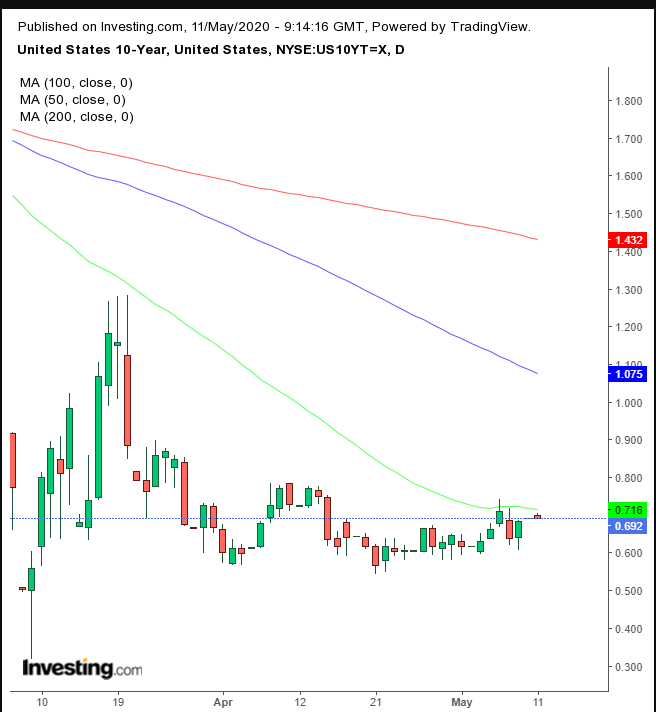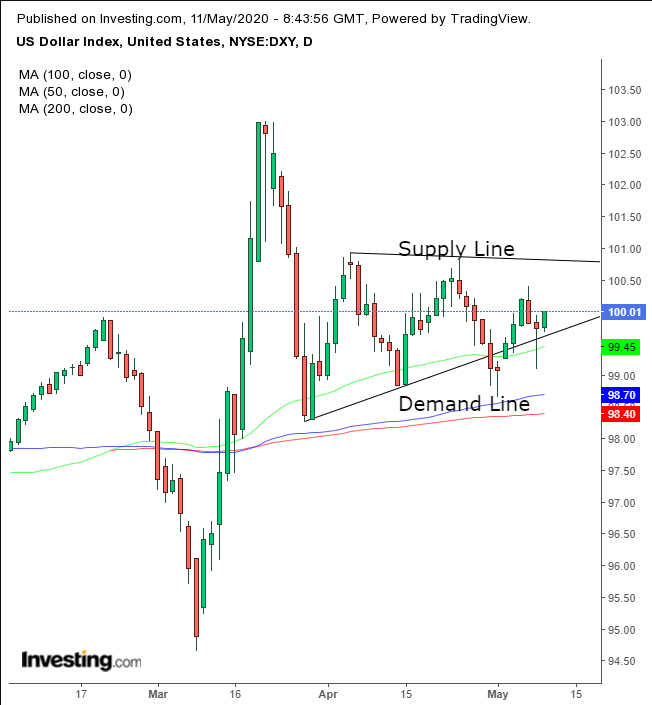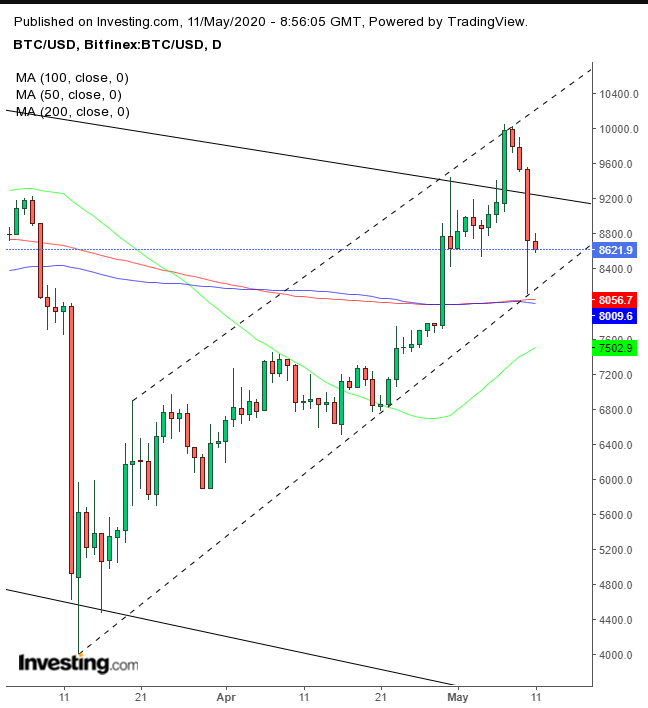- Global markets, US futures whipsaw on optimism of easing lockdowns vs new viral wave
- Oil drops after its first double weekly gain since February
- Regional Federal Reserve presidents Loretta Mester and Patrick Harker are due to speak at events on Tuesday.
- OPEC releases its monthly oil market report on Wednesday.
- US weekly jobless claims data is due Thursday.
- China releases industrial production and retail sales data for April on Friday.
- The Stoxx Europe 600 Index climbed 0.6%.
- Futures on the S&P 500 Index gained 0.3%.
- NASDAQ futures advanced 0.4%.
- The MSCI Asia Pacific Index increased 0.8%.
- The Dollar Index advanced 0.1%.
- The euro declined 0.1% to $1.0833.
- The British pound decreased 0.1% to $1.2394.
- The Japanese yen weakened 0.5% to 107.19 per dollar.
- The yield on 10-year Treasuries gained one basis point to 0.69%.
- Germany’s 10-year yield advanced two basis points to -0.52%.
- The spread of Italy's 10-year vs Germany's 10-year bonds decreased seven basis points to 2.316 percentage points.
- Australia’s 10-year yield advanced seven basis points to 0.9735%.
Key Events
Early Monday, US contracts for the S&P 500, Dow Jones, NASDAQ and Russell 2000 all opened higher, along with European equities on optimism of easing lockdowns. However, all US futures indices, along with European counterparts flipped lower at time of writing, following an uneven Asian session, on concerns of a second wave of COVID-19 infections in South Korea, Singapore and other Asian cities.
The dollar rose with yields, and oil edged lower.
Global Financial Affairs
US equity futures began the new trading week by extending Friday’s rally which—despite the worst Nonfarm Payrolls report in history and a breathtakingly high unemployment rate—was fueled by investors focusing on the outlook for a reopeining economy, along with markets boosted by the Fed’s 'limitless' safety net.
The same expectations helped the STOXX Europe 600 Index advance this morning, with banks and miners leading the gains. Germany's DAX moved up, (+0.4%), even after a spike in new cases of coronavirus were detected in the European country after the lockdown eased.
Investors continue to appear to be wearing blinders, allowing them narrow focus on current broad geopolitical risks, both health and economics related, in order to keep their eyes on a pale, flickering light at the end of a tunnel whose length is still unknown, as they continue to bet on a so-called 'V-shaped recovery,' an immediate surge after the preceding plunge, with no downtime in between.
Asian stocks were mixed. South Korea's KOSPI finished lower (-0.54%) on declining exports along with concerns of a second wave of the coronavirus. Researching the divergent responses to a resurgence in cases between Germany and South Korea should make for an interesting cultural study. Hong Kong’s Hang Seng took a cue from Wall Street, posting a 1.8% gain, its best performance in more than a month. Japan’s Nikkei 225 gained, (+1%), moving to a high not seen in more than two months, as the government said it might reopen the country's economy ahead of its May 31 timeline, as well as consider additional spending to counter COVID-19 effects.

From a technical standpoint, the Japanese benchmark formed a shooting-star on a rising gap. A close well within Friday’s candle would complete an Evening Star. Such a scenario would increase the chances of a downside breakout and the completion of a rising wedge, bearish after the initial plunge before the pause.
On Friday, US stocks advanced for a second day, completing their first weekly rally after two down-weeks. Perhaps most amazing, as we noted above, this occurred despite the worst monthly employment data on record. At this point, we believe it’s impossible to separate unbridled investor greed, whetted by unlimited QE, from rational forward-looking optimism rooted in perseverance.
The yield on the US 10-year benchmark note crossed over 0.7%.

It's hovering near the highest levels in a month but, for the fourth day, is unable to get past the 50 DMA.
The dollar extended a rebound from the bottom of the ascending triangle, whose bullish shape is counterintuitive to its preceding decline.

Clearly, investors are unfazed by the battered and shattered US jobs market, as foreign investors increase bids for American equities, which require a currency transaction for payment of shares.

After Thursday’s breach, Bitcoin is heading lower for the fourth day, slipping back into its falling channel since mid-last year, ahead of its controversial halving. Note that even as it slid back into its bearish channel, it found support precisely above the 100 and 200 DMAs, as well as the bottom of the rising channel since the March 13 bottom.
Oil slumped after last week's first back-to-back weekly gain since February.

Technically, crude futures found resistance by Thursday’s shooting star, below the highs since mid-March, whose crossing would complete a H&S bottom.
